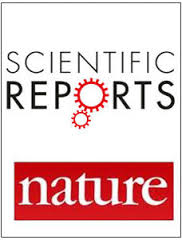A pressing challenge in engineering devices with topological insulators (TIs) is that electron transport is dominated by the bulk conductance, and so dissipationless surface states account for only a small fraction of the conductance. Enhancing the surface-to-volume ratio is a common method to enhance the relative contribution of such states. In thin films with reduced thickness, the confinement results in symmetry-breaking and is critical for the experimental observation of topologically protected surface states. We employ micro-Raman and tip-enhanced Raman spectroscopy to examine three different mechanisms of symmetry breaking in Bi2Te3 TI thin films: surface plasmon generation, charge transfer, and application of a periodic strain potential. These mechanisms are facilitated by semiconducting and insulating substrates that modify the electronic and mechanical conditions at the sample surface and alter the long-range interactions between Bi2Te3 and the substrate. We confirm the symmetry breaking in Bi2Te3 via the emergence of the Raman-forbidden A21u mode. Our results suggest that topological surface states can exist at the Bi2Te3/substrate interface, which is in a good agreement with previous theoretical results predicting the tunability of the vertical location of helical surface states in TI/substrate heterostructures.

